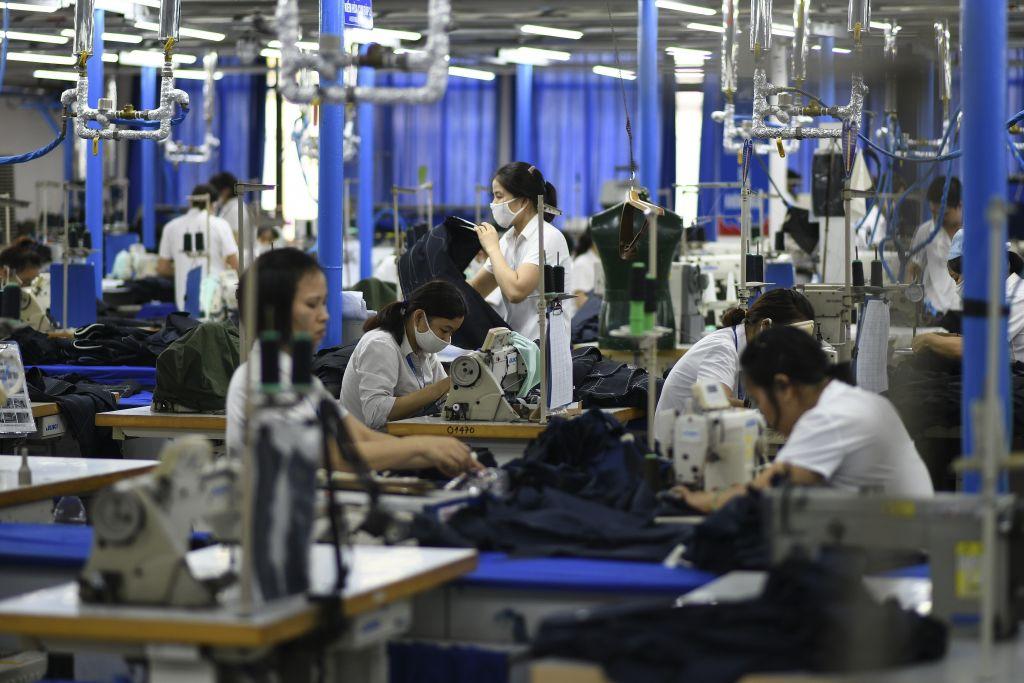Commentary
For far too long, China has been the “world’s factory.” That sweater you’re wearing, check the tag. Does it say “Made in China”? Everything, it seems, is made in China—the Walmart of the World.
Last year, as other countries were crippled by the pandemic, China’s manufacturing output, according to a Time report, was $3.854 trillion, “accounting for nearly a third of the global market.”
As the journalist Srivatsa Krishna has noted, China’s manufacturing output is now “equal to that of the US, Japan and Germany” combined. Moreover, as the world’s largest exporter of goods, China appears to be in a much stronger position than the United States, the world’s largest importer of goods.
However, all good things, as they say, must come to an end. The same is true for bad things. And a total reliance on China as a manufacturing hub is certainly a bad thing. But what if the “world’s factory” was to relocate elsewhere?
According to the aforementioned Krishna, China “is losing factories at an astonishing pace.” Five years from now, the author predicts that the manufacturing landscape will look completely different. Krishna appears to be right. Dongguan, the manufacturing hub of China, is in a state of disarray, ravaged by COVID-19 and recent power outages. The same is true for other manufacturing hubs across the country.
Now, as China loses its grip over global manufacturing, one country appears willing to take its place. That country is Vietnam.

Garment factory workers make men's suits in a factory in Hanoi, Vietnam, on May 24, 2019. Manan Vatsyayana/AFP/Getty Images
Made in Vietnam
Vietnam is fast becoming a major player on the manufacturing scene. To understand why, one must first appreciate the manner in which the country has risen to prominence, like a phoenix from the ashes.Four decades ago, Vietnam was one of the poorest countries in the world. Still reeling from the effects of the Vietnam War, which ended in 1975, the country’s economy was in dire straits. Around 1986, however, something changed. Shifting from a centrally planned economy to a more expansive, globally-inclined one, Vietnam entered a transformational period, with the government introducing a number of social, economic, and political reforms. A sense of hope and entrepreneurial spirit swept the Southeast Asian nation; the economy, very much reborn, exploded. Since then, at least 40 million Vietnamese people have been lifted out of poverty, according to the International Monetary Fund.
Today, as the researcher Peter Vanham has noted, Vietnam “is one of the stars of the emerging markets universe.” Its economic growth now rivals China’s; meanwhile, the country’s “exports are worth as much as the total value of its GDP.” At this time, the ASEAN nation is fast becoming an attractive option for some of the biggest companies on the planet, including the likes of Nike and Samsung.
With rising labor costs in China, the Vietnamese government has worked incredibly hard to court foreign companies. A member of the ASEAN Free Trade Area (AFTA), Vietnam has a free trade agreement with the European Union. Furthermore, with a thriving medical devices industry, Vietnam offers much more than just sneakers and phones. It’s fast becoming one of the biggest chip manufacturers in the world, with companies like Intel injecting hundreds of millions of dollars into assembly lines and research facilities in Ho Chi Minh, the country’s largest city. Some of the world’s leading artificial intelligence (AI) companies have also invested heavily in the Vietnamese market.
Thanks to developments in the aforementioned Ho Chi Minh as well as Hanoi, Vietnam’s capital, the economy is growing at a record pace. By 2030, Vietnam is set to have the 29th biggest economy in the world; by 2050, the 20th. From the manufacturing of computer chips to the manufacturing of electrical vehicles, Vietnam is very much open for business.
What does all of this mean for the world going forward? Well, as the Chinese regime becomes a more potent political force, removing its vice-like grip over the manufacturing sector becomes imperative. Vietnam, once a fierce foe of the United States, is fast becoming a trusted friend. The friendship is borne out of necessity. The former needs the latter, and the latter very much needs the former. In recent years, due to Beijing’s retaliatory trade actions, American farmers have lost billions of dollars in potential earnings. A reliance—or, to be more specific, an overreliance—on an adversary for medical devices and food (including pet food) is, for lack of a better word, unhealthy.
Right now, with the ability to hold the United States hostage, China possesses all the economic cards. If the regime decides to withhold vital goods—like pharmaceuticals, for example—then the United States could find itself facing a crisis of epic proportions.
For the world to be a better, freer place, China’s control over manufacturing must stop. In the not-so-distant future, Vietnam may very well provide a pleasant alternative to the Walmart of the World.
Views expressed in this article are opinions of the author and do not necessarily reflect the views of The Epoch Times.





